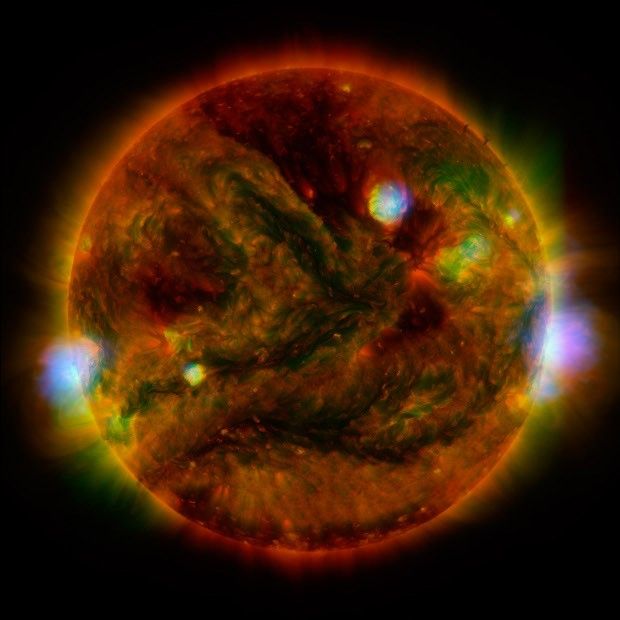Using data delivered by NASA's Nuclear Spectroscopic Telescope Array (NuSTAR, for short) and by the X-ray Telescope instrument on Japan's Hinode spacecraft, a team of researchers produced a positively stunning X-rays view of our parent star, the Sun.
The image, available below, shows both high-energy and low-energy X-rays resulting from solar activity. High-energy X-rays are shown in blue. Low-energy ones, on the other hand, are represented in green, explains University of Glasgow researcher Iain Hannah.
As for the shades of yellow and red that are also noticeable in this view of our Sun, they show the distribution of ultraviolet light as recorded by NASA's Solar Dynamics Observatory. The regions that appear blue-white highly energetic spots and pack material heated to millions of degrees.
“We can see a few active regions on the Sun in this view,” astronomer Iain Hannah explained in an interview for the Royal Astronomical Society.
“What's great about NuSTAR is that the telescope is so versatile that we can hunt black holes millions of light-years away and we can also learn something fundamental about the star in our own backyard,” added Brian Grefenstette with the California Institute of Technology in Pasadena.
The data and the smaller images that were compiled to produce this gorgeous X-rays view of the Sun were all obtained by NASA's NuSTAR, Japan's Hinode spacecraft and NASA's Solar Dynamics Observatory on April 29, 2015, around the same time.

 14 DAY TRIAL //
14 DAY TRIAL // 

